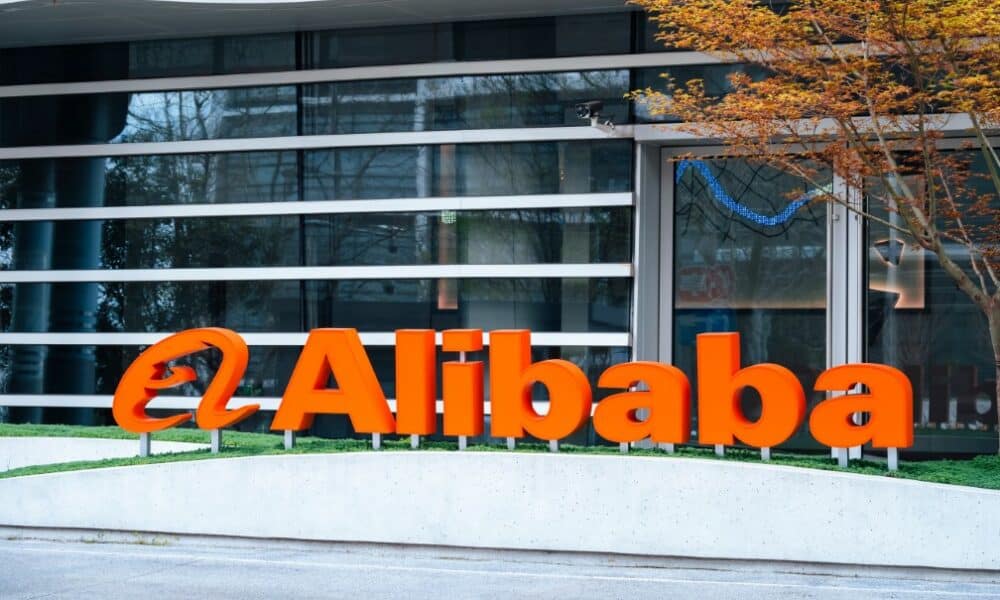Chinese tech giant Alibaba announced the launch of its latest artificial intelligence model, Qwen 2.5-Max, on January 29, 2025. According to the company, this new AI version outperforms major competitors, including DeepSeek-V3, developed by Chinese startup DeepSeek, as well as top models like GPT-4o from OpenAI and Llama-3.1-405B from Meta. The announcement was made by Alibaba Cloud through its official WeChat account, catching the attention of the global AI industry.
The release of Qwen 2.5-Max comes during an era of fierce technological competition, particularly following the rapid rise of DeepSeek, which has shaken the industry in recent weeks. On January 10, 2025, the startup launched DeepSeek-V3, an advanced open-source AI assistant. Just ten days later, on January 20, it unveiled the DeepSeek-R1 model, further strengthening its position in the AI landscape. These launches significantly impacted Silicon Valley, triggering a sharp decline in the stock prices of various tech companies.
Alibaba’s swift response to DeepSeek’s rapid growth underscores the increasing competitiveness in the AI race. The company not only upgraded its AI model but also ensured that its latest version could cater to a wide range of applications, with improvements in language processing, logical reasoning, mathematics, and coding.
DeepSeek’s rise and the AI industry’s reaction
DeepSeek has emerged as a disruptive force in artificial intelligence. Founded by Liang Wenfeng, the company has gained traction by developing high-performance, open-source models at affordable prices. The DeepSeek-V3, for example, quickly became one of the most advanced solutions on the market, boasting 671 billion parameters. Its widespread adoption by developers and enterprises significantly increased DeepSeek’s influence and pressured major competitors like Alibaba and ByteDance to accelerate their AI advancements.
DeepSeek’s impact was so significant that, just two days after the DeepSeek-R1 launch, ByteDance, the parent company of TikTok, announced a new version of its AI model. According to ByteDance, its update surpassed OpenAI’s o1 model in benchmark tests evaluating the model’s ability to understand and respond to complex instructions. This growing battle for AI supremacy highlights how DeepSeek has reset the industry’s pace of innovation.
Additionally, DeepSeek sparked a price war in China’s AI sector. When it launched DeepSeek-V2 in May 2024, it adopted an aggressive pricing strategy, charging just 1 yuan (US$ 0.14) per million tokens—significantly lower than competitors’ rates. This forced major players like Alibaba, Tencent, and Baidu to cut prices drastically. In response, Alibaba reduced the prices of its AI services by up to 97% to remain competitive.
What sets Qwen 2.5-Max apart
With Qwen 2.5-Max, Alibaba aims to reclaim leadership in the Chinese AI market and establish itself as a global competitor. The company claims that its new model offers:
- Enhanced language comprehension – Qwen 2.5-Max significantly improves text generation and interpretation.
- Superior logical reasoning and mathematics – The model excels in problem-solving and advanced calculations.
- Greater energy efficiency – Alibaba highlights that Qwen 2.5-Max consumes less power than previous versions, making it more sustainable and cost-effective.
- Benchmark superiority – The model reportedly outperforms DeepSeek-V3, GPT-4o, and Llama-3.1-405B in a wide range of AI evaluations.
The impact of US export restrictions on China’s AI development
The US-imposed restrictions on exporting advanced semiconductor chips to China have forced Chinese tech firms to develop alternative AI solutions. Lacking access to NVIDIA’s cutting-edge processors, Chinese AI companies have focused on optimizing model architectures and enhancing cloud computing capabilities to maintain competitiveness.
DeepSeek, in particular, has demonstrated resilience and innovation by developing AI models that rival Western companies despite using less advanced hardware. This progress has pushed companies like Alibaba and ByteDance to accelerate their investments in AI research and development, reducing their dependency on foreign technology.
DeepSeek’s lean model vs. corporate giants
DeepSeek operates in a starkly different manner from China’s major tech corporations. While industry giants like Alibaba and Tencent employ hundreds of thousands of workers, DeepSeek functions as a research lab, with a small team primarily composed of top graduates and PhD researchers from leading Chinese universities.
Founder Liang Wenfeng has publicly stated that he believes large companies are not suited for the future of AI, due to their rigid hierarchies and high operational costs. DeepSeek, on the other hand, leverages flexibility and efficiency, allowing it to scale rapidly and challenge much larger competitors.
Despite its agile structure, DeepSeek still faces hurdles, particularly regarding China’s government censorship policies. The company’s chatbot is programmed to avoid politically sensitive topics, employing a dual-layer censorship mechanism—where responses are first generated and then filtered before being displayed to users. However, researchers have found ways to bypass this censorship by rewording prompts or using different languages.
Global market reaction to DeepSeek’s rise
DeepSeek’s rapid success has had a direct impact on global financial markets. The startup’s emergence triggered the largest single-day loss in NVIDIA’s stock value, highlighting how AI advancements influence global economies.
Analysts have compared this moment to the “AI Sputnik event,” referencing the historic launch of the Soviet Sputnik satellite, which forced the United States to accelerate its space race efforts. Similarly, DeepSeek’s rise is pushing Western tech companies to reassess their AI strategies to maintain dominance.
Alibaba’s Qwen 2.5-Max launch on Lunar New Year’s Day underscores the urgency surrounding the AI arms race. While most Chinese employees were on holiday, Alibaba deliberately unveiled its latest AI, signaling the immense pressure on tech companies to remain at the forefront of AI innovation.
The AI race is far from over
As Chinese AI companies continue to make breakthroughs, competition between Alibaba, DeepSeek, ByteDance, and others will only intensify. Industry experts anticipate several new AI model releases in the coming months, fueling an even fiercer battle for market dominance.
The fight for AI supremacy is moving at an unprecedented pace, with every new development reshaping the global tech landscape.







